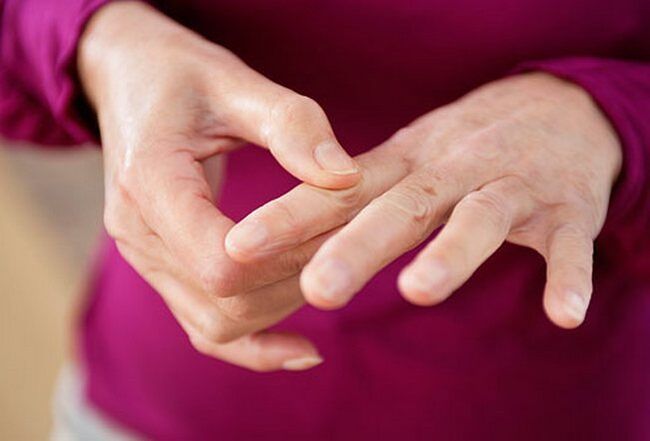
In older age groups, finger pain is very common in both men and women. These are often accompanied by swelling, stiffness and tenderness when flexing or flexing the joint. Such symptoms are not only signs of the body's natural aging, but also the clinical manifestations of many different diseases. Therefore, it is necessary to clearly identify the cause of finger joint pain and immediately initiate treatment.
Causes of finger joint pain
If the pain occurs weekly, then they can no longer be attributed to increased muscle tension after long periods of manual work. At an early stage of development, inflammatory or degenerative-dystrophic pathologies are manifested in this way. Finger pain is associated with the gradual destruction of bone and cartilage tissue, which can cause joint deformity, complete or partial immobility (ankle joint disorder).
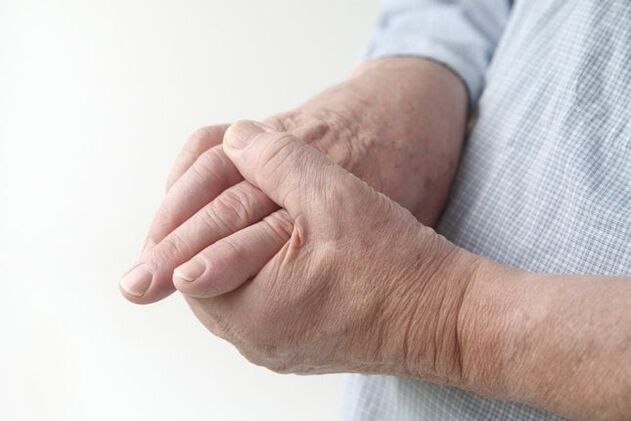
Arthritis
The knuckles of the hand can be affected by reactive, rheumatoid arthritis, psoriasis - inflammation, which progresses rapidly. In addition to severe pain, inflammation can be observed - redness and swelling, which limits range of motion. And the inflammatory arthritis process is often accompanied by signs of general intoxication of the body - increased body temperature, chills, fever.
Sick still
This is a severe autoimmune disease that probably develops as a result of the immune system inadequately reacting to the invasion of pathogenic microorganisms. Still disease doesn't just affect small and large joints. The skin, organs of the cardiovascular and respiratory systems, and lymph nodes are damaged.

Osteoarthritis
This pathology is characterized by destruction of bone tissue with additional deformation of the joints. With osteoarthritis in the morning, fingers swell and when you try to bend or straighten them, there is some resistance. The throbbing pains appear only in the relapsing phase, and in the remission phase - only mild discomfort.
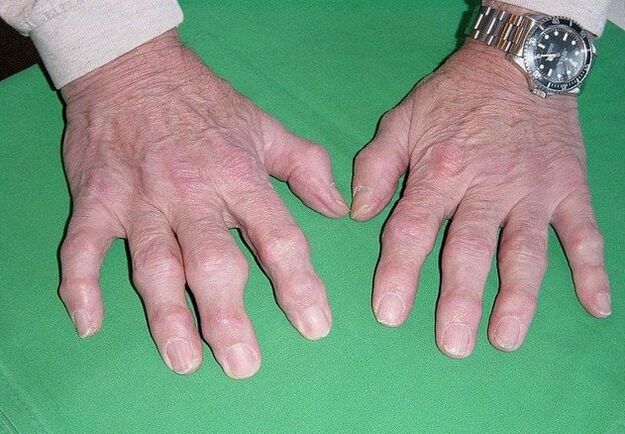
Ligament inflammation
Pathology develops due to monotonous movements that are often repetitive. Finger ligamentitis affects the ligamentous apparatus of the hand, in which there is a blockage of the finger in an extended or bent position. But such a pronounced symptom occurs in the late stages of the pathology, and in the early stages it is manifested by soreness, scratching or clicking when the joints are folded.
Gout
With gout, uric acid salt crystals begin to deposit in the knuckles, irritating soft tissues, cartilage, and bones. An inflammatory process develops, in which the ligaments, muscles, and tendons are gradually involved. During gout pain, throbbing pain, throbbing pain, and throbbing pain occur. The skin in the joints becomes swollen, red, and hot to the touch.
Osteoarthritis
Polyarthritis is a form of osteoarthritis that affects many joints at the same time. The cartilage tissues become thinner, thicker and lose their buffering properties. To stabilize the joints, bone structures begin to deform, and develop with the formation of bone-forming cells. These growths damage soft tissues, often leading to the development of the inflammatory process.
Injury
Finger joint pain can be a result of fractures, dislocations, dislocations, cuts in muscles, ligaments, and tendons. A person is injured like that when he falls into a straight arm, a strong impact from the direction or a bruise. If the victim does not seek medical help, the joint structures are fused in the wrong anatomic position, so pain in the hand becomes persistent, increasing after hypothermia or a sharp change inweather.
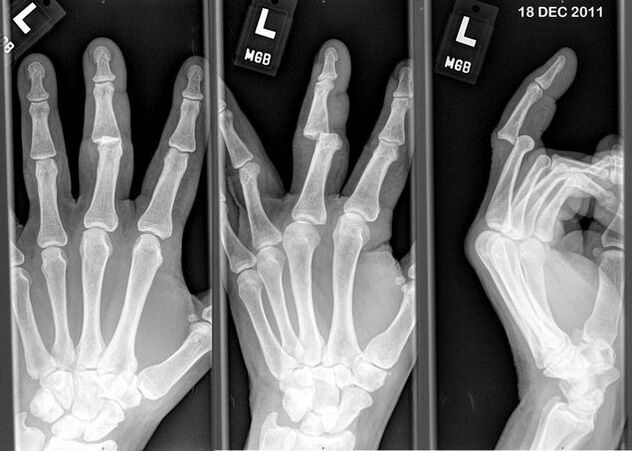
Vibration disease
This pathology develops in manual mechanized workers involved in the use of percussion or rotary instruments. Clinically, the disease is not only manifested by discomfort in the knuckles, hands, but also accompanied by disorders of blood vessels, vasospasm, circulatory disorders, blood pressure spikes.
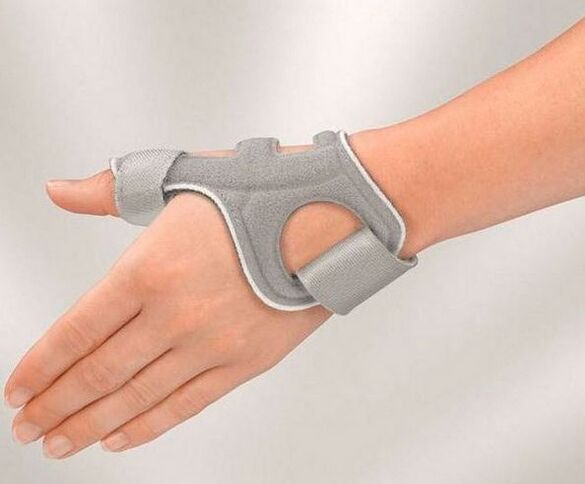
Tunnel syndrome
The cause of the appearance of the tunnel syndrome is any pathology that causes a decrease in the volume of the carpal tunnel (arthritis, arthritis, adipoma). The result is a compressed ischemic injury of the median nerve. Pain appeared, decreased sensitivity, the patient complained to the doctor about numbness, tingling, ants. Any movement of the hand is accompanied by weakness, especially if you need to grab an object with your thumb.
The symptoms
Seizures, throbbing pain, and throbbing pain in the knuckles are the leading symptoms of gout, infectious, rheumatoid arthritis, including adolescents. The symptoms were also an increase in local temperature, redness and swelling of the skin.
Joint disease and other degenerative-dystrophic diseases in early development have no symptoms. Sometimes mild pain occurs, which goes away after a short break. But their severity is constantly increasing. Pain accompanied by stiffness, clicking sound when flexing and / or stretching fingers.

Effect
In the absence of medical intervention, pain intensity increases against the deformed background of the inter-brain joints. At the end of any pathology, partial or complete fusion of the joint space occurs. Persons unable to bend or stretch their fingers, causing the inability to work and become disabled.
The inflammatory and destructive processes gradually spread to healthy soft tissues, cartilage and bones. As a result, pain may be felt early in some joints or fingers.
Diagnose
The primary diagnosis is made on the basis of an external examination, patient complaints, medical history data and results of some functional tests. To confirm it, X-rays, MRI, CT, arthroscopy are performed. If the infectious origin of the pathology is suspected, a biological sample is transplanted into the nutrient medium to determine the type of bacteria and their resistance to antibiotics.
Treatment
Determine the treatment strategies, the doctor (orthopedist, rheumatologist, trauma doctor) taking into account the type of disease, the type of disease, the degree of tissue damage, and the number of complications that have developed. Usually, to reduce the severity of the patient's pain, a soft bandage, brace, or semi-rigid, rigid brace should be worn.
Medications
In the treatment of pathologies manifested by pain in the knuckles of the hands, drugs of different clinical and pharmacological groups are used. These are nonsteroidal anti-inflammatory drugs (NSAIDs), muscle relaxants, glucocorticosteroids, chondroprotectors. Also used are drugs for improving blood circulation, B vitamins, warming ointments. For acute pain relief, medication is administered intramuscularly and sometimes in joints. The use of tablets or ointments will allow you to get rid of the discomfort less clearly.
Massage
After the relief of acute pain and inflammation, the patient is assigned to classical exercises, acupressure, vacuum aspiration, including hard massage. The revitalization process improves blood circulation, eliminates muscle spasms and speeds up the recovery of damaged tissues.
Physical therapy
Electrophoresis and ultrasound treatments help relieve pain or completely cure. During the implementation, hormonal agents, chondroprotectors, anesthetics, analgesics, B vitamins are used. For the treatment of joint diseases, the patient can also be prescribed up to 10 sessions. magnetotherapy, laser therapy, UHF therapy.
Physical exercise
Regular exercise therapy can quickly strengthen the muscles of the hand, preventing the progression of dry joints or arthritis. Set of exercises performed by an exercise therapist, taking into account the type of disease. It usually involves hand rotation, finger flexion, grasping and holding small objects.
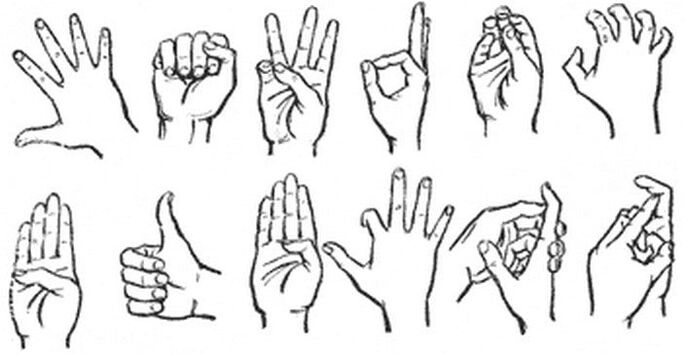
Diet
In the diet of patients with arthritis or osteoarthritis, it is necessary to have plenty of fresh vegetables, roots and fruits. It is necessary to completely exclude semi-finished meats, smoked meats, fast foods, fatty meats, and alcohol from the daily menu. Instead, eat rabbit meat, beef, fatty sea fish, clear soups, cereals, and dairy products.
Folk remedies
After the main treatment, the swelling and pain are gone, the doctor may authorize the use of traditional medicine. During the period of rehabilitation, it is allowed to use a number of decoctions, hand soaps, homemade ointments.

The use of infusions and decoctions of herbs
The course of painful finger conditions is often exacerbated when a person's psychological state declines. The use of herbal teas will help improve it. St. John's wort, valerian, motherwort, thyme, basil, oregano have tonic, soothing and normalizing sleep effects. To prepare drinks, one teaspoon of dried plant material (without a slide) is mixed with one cup of boiling water. Let it infuse for a few hours, then filter and take 100 ml before bedtime.
Baked onions and wax ointment
Roast the two onions until soft, crush in a bowl until smooth, add 20 g of molten wax in a water bath. The resulting mass is applied to the joints, fixed with a gauze bandage. The duration of the course of treatment is 1-2 hours.
Honey and mustard ointment with herbs
Pour 1 teaspoon of dried flowers of calendula and chamomile into the container, pour 0. 5 cups of boiling water, leave for 5 hours. Mix 1 teaspoon of dried mustard and fatty sour cream in a bowl, add 2 teaspoons of honey. The resulting infusion is injected drop by drop until a homogeneous mass is formed. Before using the ointment, the skin is lubricated with vegetable oil.
Herbal baths
Pour 5 roses, juniper, cranberry, pour in one tablespoon elecampane, St. John's wort, birch buds. Pour 1 liter of boiling water, leave on for 2 hours. Cool a little, filter, pour into a cup, add warm water if needed. Dip the brush in the resulting infusion solution for 30 minutes.
Oil bath
Fill a small bucket with warm water (1. 5-2 liters) with warm water, add 1-2 drops of rosemary, eucalyptus, and pine essential oils. Pour 1 teaspoon of cosmetic almond oil, shake wellThey immersed their hands in water for 30-40 minutes. After the procedure, any lotions or moisturizers are applied evenly to the skin.
Straw tray
Pour 0. 5 liters of chopped straw into a small pot, pour in 2 liters of hot water. Bring to a boil, let low heat for 30-40 minutes. Cool to room temperature, filter. Pour warm broth into the cup, keep the brush in it for about half an hour.
Take preventive action
To avoid pain in the knuckles, you should have a physical exam every 6-12 months. Pathology detected at an early stage of development usually responds well to conservative treatment. You should also avoid trauma, don't smoke, limit alcohol intake, and exclude high-fat and simple carbohydrate foods from your diet.


































